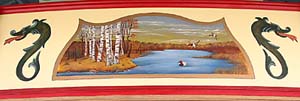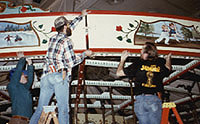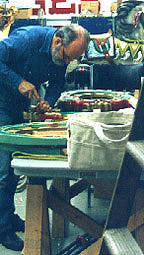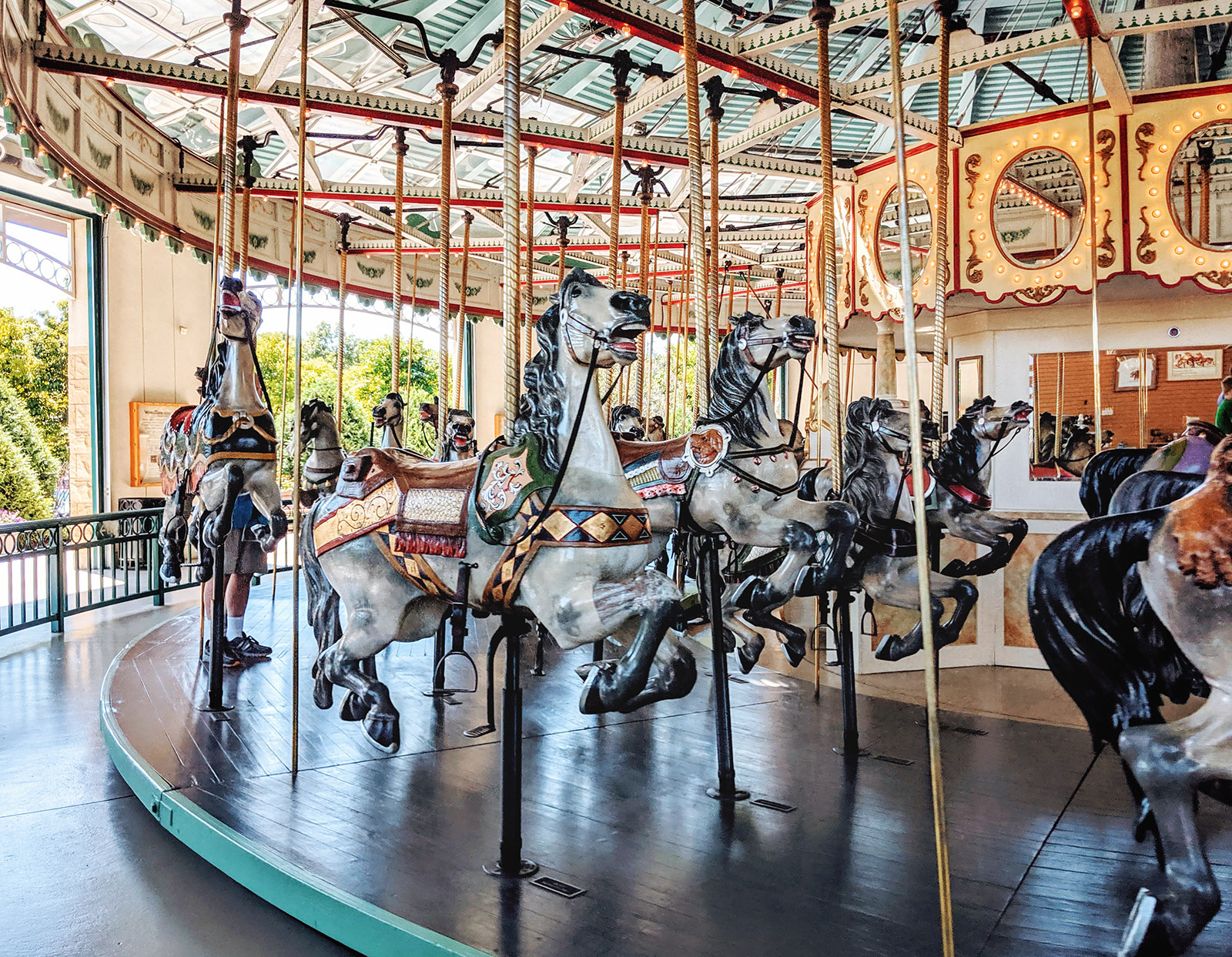In a meticulous process that began in 1990 and was completed in spring 2000, Cafesjian’s Carousel has been restored to its 1914 appearance. The overhead structure and scenery panels were restored first, during summer and fall of 1990 while the carousel was in pieces awaiting its move to downtown St. Paul.
Restoration of the horses began in 1993. The carousel’s 68 horses and two chariots are wearing mostly their original paint; the carousel is believed to be one of only three operating carousels in the United States to still be in original paint. OFC repaired damage to the horses, but left alone signs of normal use, such as worn edges on some of the horses’ trappings. Our aim was to reflect the age and history of the carousel.
 Several horses were badly burned in a fire in 1939. The most damaged was a pinto pony, which workers stripped and repainted after the fire. The pinto was the last horse to be restored by Our Fair Carousel. It was stripped again and any signs of original paint were noted. Then it was repainted in keeping with those observations and some existing photos taken before the fire.
Several horses were badly burned in a fire in 1939. The most damaged was a pinto pony, which workers stripped and repainted after the fire. The pinto was the last horse to be restored by Our Fair Carousel. It was stripped again and any signs of original paint were noted. Then it was repainted in keeping with those observations and some existing photos taken before the fire.
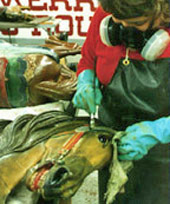
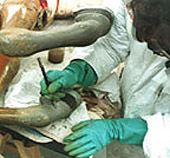
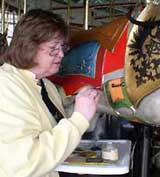
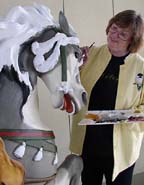 Restoration expert Rosa Ragan of North Carolina helped develop the plan and guidelines for the restoration, and she trained the initial crew of volunteer workers. Linda McDonald, an artist who had played a leading role in recreating the scenery panels, became the lead volunteer and then was hired to complete the painting of the horses. Her work has made her an accomplished carousel restoration artist. A member of the board of directors of Our Fair Carousel, Inc., McDonald maintains the appearance of the horses and chariot, touching them up periodically.
Restoration expert Rosa Ragan of North Carolina helped develop the plan and guidelines for the restoration, and she trained the initial crew of volunteer workers. Linda McDonald, an artist who had played a leading role in recreating the scenery panels, became the lead volunteer and then was hired to complete the painting of the horses. Her work has made her an accomplished carousel restoration artist. A member of the board of directors of Our Fair Carousel, Inc., McDonald maintains the appearance of the horses and chariot, touching them up periodically.
